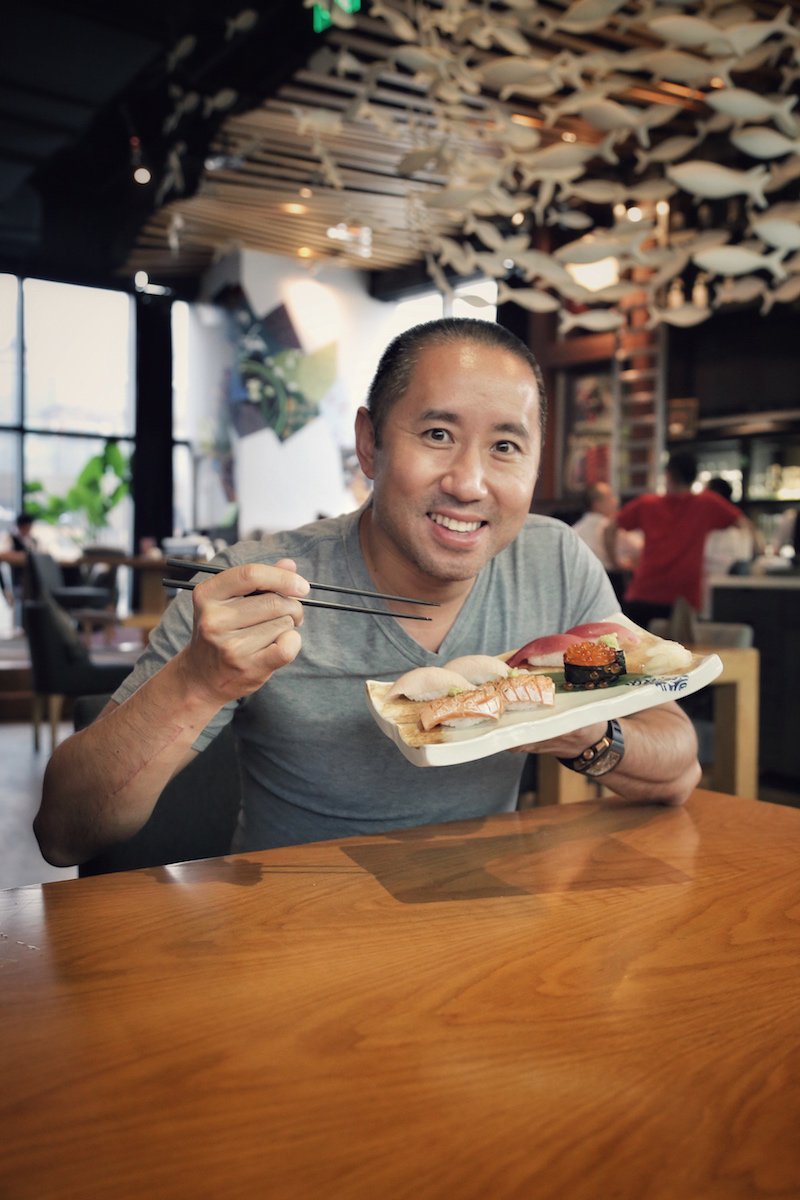California Dreaming, Beijing Innovating: Alan Wong's Journey From Waiter to Sushi King
Today, Alan Wong is known as Beijing’s sushi king. But there was a time, long before he founded the wildly popular Japanese restaurant Hatsune, that he couldn’t consider scarfing such dishes down, let alone with the gusto that he now has.
“My younger brother, Nelson, was the first one to take me to get sushi when we were in our late teens. And I was very squeamish about eating raw fish,” Wong recalls with a grin, before glancing at the plate full of sashimi and California rolls that have now almost become part of his daily regiment. But back then, Wong remembers looking at his first serving of sushi and thinking: “‘Yuck!’ at least at first. "And as I tried it I found myself half enjoying it, but also half disgusted by it. A total newbie. But after awhile I started thinking about it and craving it.”

A few powerful elements drew him in. Initially, it was the juxtaposition of flavors. “At first I was a bit confused by, and then eventually became obsessed with, the way rice and umami’s flavors come together. Their combination, wow … there’s really nothing like it!” he enthuses, adding that his passion as a food an beverage patron eventually lead him to come work at one of the venues that he acquired a taste Japanese seafood.
That’s right: a humble little restaurant named Tokyo Sushi, in Folsom, California, with its limited range of California rolls and no-frills sashimi, was the training ground where one of Beijing’s best restaurateurs cut his teeth. Wong began there as a waiter, and eventually worked his way up to sushi chef. Not long afterward, though, he had to leave that part-time high school job, in his California hometown’s small Asian community, to embark on a journey to the Far East itself. Wong’s father worked in real estate at the time, and his company was involved in the building of the International School of Beijing. Young Alan’s job was to be a liaison between the Chinese company and the English board of directors, but in truth he felt like a glorified intern, and before long he and his father began brainstorming a way for him to branch out on his own – opening a restaurant.
At first, Wong thought about opening a rotary sushi joint, where the dishes would be served from the bar on a conveyor belt. However, it quickly evolved into a 500-square-meter sit down restaurant. That original Guanghua Lu location was such a hit – thanks to its then all too-rare-in-Beijing options like the spicy 119 Roll, the delectably crunchy The Holy Crab, among others – and eventually afforded Alan the opportunity to open another branch in the then rough-hewn Sanlitun area.
“I knew this neighborhood from when I used to go to bar street, and I figured it would be a big hit once it was more developed,” he says of the location that would eventually become Hatsune’s flagship outlet on the third floor of Taikoo Li. “The owners contacted me to come to this place in 2007. I took a look and said: ‘Ok, but give me best spot.’ Since I was one of the first to sign, along with Element Fresh and Blue Frog, we managed to get the best locations in the mall. So that was a big milestone for us, and now when a lot of people think of Hatsune, they think of this location.”
It’s a long way to come for man who, when he first saw sushi, could barely bring himself to try it. And Wong says he has fond memories of that journey all along the way. “I remember taking the caterpillar roll – a ubiquitous California sushi roll – that I learned to make in Sacramento and using it at Hatsune, before developing so many other rolls and dishes of our own,” he says.
“What we do here is light years ahead of what we did at Tokyo Sushi in Sacramento. And the owner, my old boss Linda, is still a friend of mine. She’s such a nice lady who taught me so much, and it was great to eventually invite her here as a treat. She was really amazed, she loves what we do here.”
More stories by this author here.
Email: kylemullin@truerun.com
Twitter: @MulKyle
WeChat: 13263495040
Photos: Zeus



